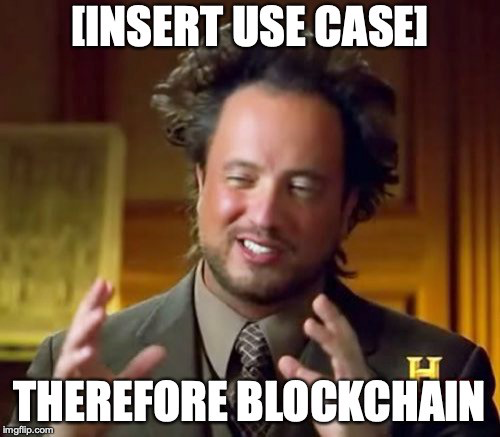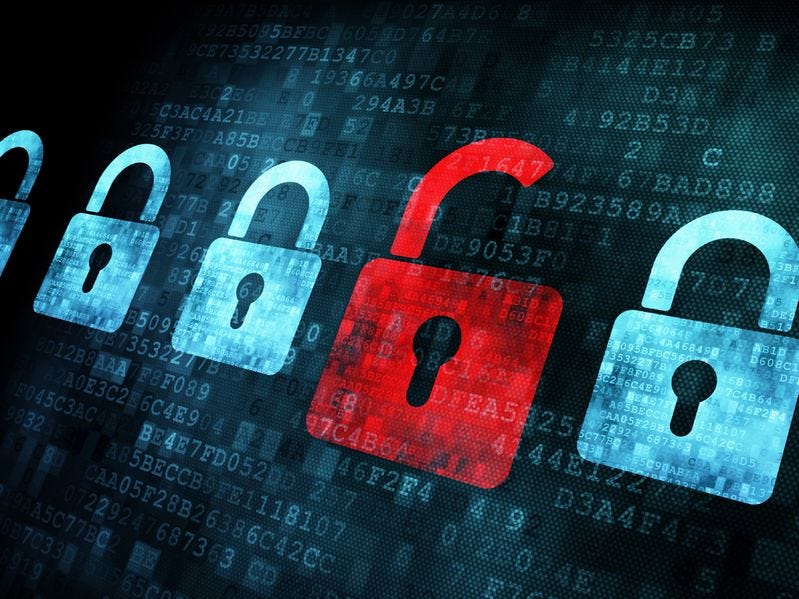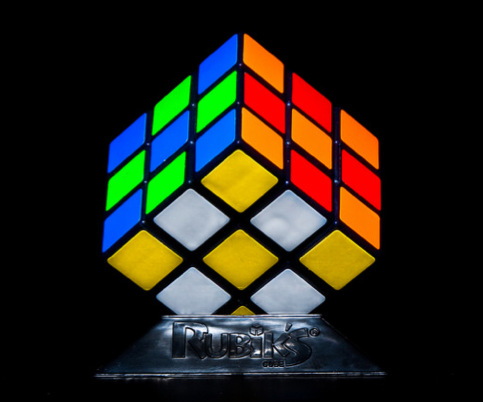What is Blockchain Actually Good For?
Beyond the Hype — What is Blockchain Actually Good For?
Blockchain is all the hype these days. You will have heard of hundreds or even thousands of use cases popping up across every industry left, right and center.
The technology has become so hyped that it seems the blockchain community no longer feels the need to explain what problem blockchain is solving, or how it solves it, when applied to a particular situation.


Let’s take a non-cryptocurrency example to illustrate this (for a change!)
A use case that has gained momentum in recent times is the use of blockchain for medical prescriptions. The logic follows that medical prescriptions are sensitive documents with high risk of abuse and must be secured as medical record systems go digital — THERFORE BLOCKCHAIN… right?
Not so fast… Let’s understand the challenges first.
What is the key issue we are solving for? Is it that patients are forging prescriptions to get drugs they shouldn’t be getting? Or are some doctors prescribing drugs they should not be prescribing?


If it’s the former, blockchain can help. It’s immutable, auditable trail of records can make it very difficult for a patient to forge prescriptions. Then again, if you’re picturing millions of PDF prescriptions being stored on a blockchain, hold your horses. Its decentralised, distributed nature makes it an AWFUL storage option by design, but there are ways around that to still get the benefit we are seeking (i.e. hashing) — let’s come back to that later.
More importantly, what if it’s the latter? If the very doctor that is ‘misbehaving’ is the one typing the prescription into the system, Blockchain doesn’t solve a thing! It will create a perfectly immutable, auditable record of shady medical prescriptions.
Now I don’t have the stats but… are we witnessing a glaucoma epidemic, or are some doctors taking a rather expansive application of medical marijuana? What does your intuition tell you? :)
Seriously though, the takeaway that follows is that if you are considering implementing blockchain in your business, you need to think about the challenges you are facing and figure out (a) whether blockchain is a suitable tool, superior to existing technologies for your purposes and (b) if so, how can it best be implemented given its unique attributes?
Blockchain is a hammer and not everything is a nail.


Its unique attributes make it superior to pre-existing technologies for some — but not all — intents and purposes. Identifying the challenges you are confronted with that blockchain is better suited to solve can be a more intuitive and instructive starting point than referring to a broad list of ‘use cases’ to see if one seems to apply to your objective.
In this spirit, I propose a (non-exhaustive) set of three ‘challenges’ blockchain is best suited to solve, more so than any other pre-existing technology:
Disintermediated Digital Value Exchange


Pre-blockchain, transferring money or asset ownership via electronic means required private intermediaries to custody the property, validate ownership and execute the transaction. Users were required to trust these third parties not to misappropriate or lose the funds or assets, irreversibly confirm the transfer and ensure that no “double spending” (or, in the context of assets, double ownership transfer) took place.
Blockchain changed the game by making cryptocurrencies and asset tokenization possible (hereinafter referred to collectively as “Crypto-tokens”). Crypto-tokens are often referred to as ‘trustless’ and ‘secure by design’, in the sense that these do not require users to trust any private third parties — only trust in that the design of the blockchain protocol will serve to realize irreversible value transfers securely.
Blockchain acts as the transfer ‘pipeline’, validator and executioner. Crypto-tokens are but transaction entries on the blockchain ledger. Accordingly, these can ‘change hands’ on the blockchain platform without the need to leverage traditional payment platforms or property registrars, avoiding reliance on central counterparty intermediaries. Instead, funds and asset ownership are securely registered across thousands of copies of the ledger distributed across the network nodes, with no single node holding an authoritative copy to become a single point of failure.
Reliable Traceability & Authentication of Digital Records


Following decades of rampaging digitization across all areas of society and business, we are heavily reliant on digital documents and records. When it comes to highly sensitive or critical data, preserving the integrity of the data and ensuring document authenticity becomes a key challenge. We need an effective way to track modifications by time and authors, and spot any form of tampering.
Blockchain can efficiently achieve this leveraging cryptographic hashing. A hash function takes a variable length data input and digests it into a fixed length alphanumerical output.
A good analogy for a how a hash function works is that of a Rubik’s Cube game, where each character of the input is translated by the hash function into an instruction on how to manipulate the cube.


This has three key implications:
- No matter how many manipulations (i.e. input length), the size of the cube remains constant (i.e. output length), so a larger input can be digested into a much smaller output.
- A single manipulation changes all sides of the cube, which translates to any change in input — no matter how small — resulting in significantly noticeable change in the output.
- The sequence of manipulations performed (i.e. the input) cannot be reverse engineered by merely observing the present configuration of the Rubik’s cube (i.e. the output). It is a one-way function.
Hashes of information records can be committed to the blockchain in a signed transaction by the parties. This creates auditable proof of the existence of an information record and any subsequent modifications by time and author. In the event of a dispute, any party can prove the true version of the trade terms by re-generating a hash that matches the one recorded in the blockchain. Meanwhile, trade documentation can be more efficiently stored off-chain in a separate traditional database.
This also provides a degree of privacy as the trade documents are hidden from other platform members, who can only view the hash. However, the addresses of the authors, the timing of modifications and the historical frequency of transactions can still be seen by other participants with full access to the same ledger.
It should be noted that, since the output of a hash function can be significantly smaller than the input, it is possible for two different inputs to generate the same hash — i.e. two or more different sequences of manipulations can result in the same configuration of the Rubik’s cube. Notwithstanding, for our purposes, the probability that a maliciously modified record (that still makes sense) produces the same hash value is negligible, given the second implication above and most importantly the huge number of permutations possible in the hashing functions used (e.g. SHA256 used in Bitcoin produces 2²⁵⁶ permutations — that is a very big Rubik’s cube!).
Certain and Irreversible Rights Settlement


Historically, we have relied on third parties to ensure enforcement of our rights and/or settlement of conditional transactions, such as adjudicators, escrow service providers (e.g. banks) and rights management companies (e.g. music labels). Typically, these rights:
- are triggered by the fulfilment of specified conditions or occurrence of an event (e.g. right to insurance settlement upon a natural disaster); and
- involve two or more parties, each subject to corresponding rights and obligations (e.g. insurance company has a right to receive premiums and the obligation to pay damages caused by natural disasters, while the insured has the obligation to pay premiums and the right to be compensated for damages caused by natural disasters).
Reliance on these third parties was needed to verify that a right had arisen / conditions had been met (e.g. a natural disaster took place), and ensure that each party fulfils its obligations, again introducing cost, delay and risk.
Blockchain-based ‘Smart Contracts’ enable automated and irreversible execution of changes to the ledger based on pre-established deterministic logic. This means they can be programmed to automatically settle the rights and obligations between parties upon the fulfilment of specified conditions.
The fulfilment of the conditions can be verified on the basis of internal changes to the state of the ledger based on on-chain transactions (e.g. cryptocurrency transferred to an address triggers the transfer of a crypto-token representing an asset, like in ICOs), or based on off-chain events fed into the blockchain by an “oracle” (i.e. another smart contract that registers external data from a specified trusted data source, e.g. Global Seismographic Network issuing an earthquake alert).
Any Crypto-tokens to be exchanged are committed to the smart contract at the time of creation, effectively establishing an escrow that ensures the tokens will be available for transfer when the time comes to settle.
Because ‘smart contracts’ are decentralized applications, they are run in parallel by each and every node, in the same way as a simpler transaction on the blockchain. Accordingly, once a smart contract is broadcasted to the blockchain network, no single party can stop the network from executing the transaction once the conditions are met — whether it is the sender, recipient or a regulator.
The distinction between these three ‘challenges’ and ‘use cases’, as the term is most commonly understood, is that ‘use cases’ describe a context in terms of an industry and task that can leverage blockchain as an enabler, while ‘challenges’ refer to specific pain points that blockchain helps to tackle and are industry/task-agnostic.
A single ‘use case’ may entail multiple ‘challenges’
To illustrate this, let’s take the well-explored ‘use case’ of a digital trade platform enabled by blockchain. (If you are not familiar with this use case, you can check out my article).


In this example, two parties agree to exchange goods for payment, which is due upon arrival of the goods to a specified port in satisfactory condition. This use case presents all three of the aforementioned challenges mentioned above:
- Before shipping the goods, the seller needs to ensure that the buyer can and will make payment upon delivery. Historically, this would be guaranteed by banks in a letter of credit arrangement. Blockchain can substitute this providing certainty of rights settlement using a smart contract that locks the buyer’s funds and releases them upon arrival of the goods to the port in good condition.
- During the shipment journey, the buyer will want to ensure that all customs documentation is in order, any levies have been paid and the goods have not been subject to conditions that may affect quality. Instead of having to rely on receipt of physical paperwork at the end of the trip at the risk of having been tampered with, blockchain can provide reliable traceability and authentication of the records. All customs documentation can be securely recorded to the blockchain and cryptographically signed by the relevant authorities for inspection by the seller. IoT sensors such as GPS, thermometer and accelerometer can also trace the conditions of the goods throughout the journey and record the data onto the blockchain, providing greater assurance to the buyer that the goods have not been spoilt.
- Finally, the payment and transfer of ownership of the goods can be executed on the blockchain in a disintermediated digital value exchange, without the need for traditional financial services infrastructure or centralized registrars that increase turnaround time, cost and risk.
This analysis can also be applied to other common use cases, such as remittances via Ripple (disintermediated value exchange), ICO fundraising via Ethereum (disintermediated value exchange and rights settlement); document notarization via Stampd.io on the Bitcoin network (traceability and authentication of digital records) and many others.
What do you think? What other fundamental challenges is blockchain best suited solve?
